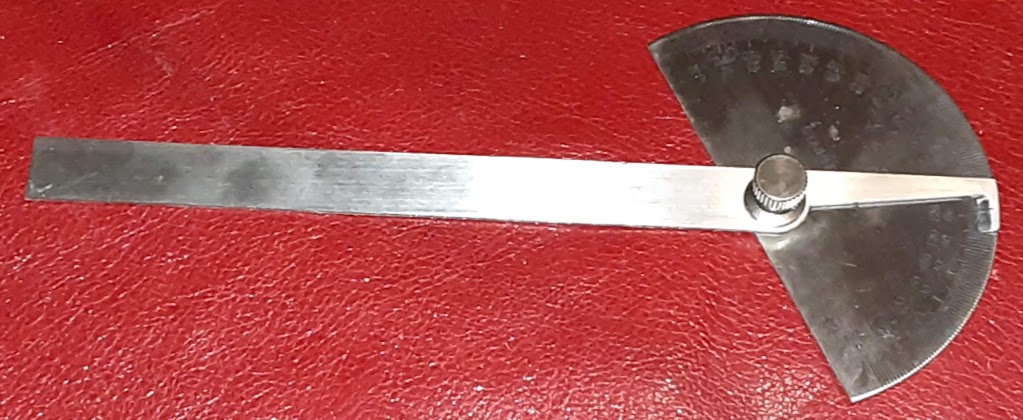- Joined
- May 25, 2018
- Messages
- 616
I just saw that
 Gritomatic
has a new laser goniometer for what has to be the cheapest price ever for this type of device. Has anyone tried it?
Gritomatic
has a new laser goniometer for what has to be the cheapest price ever for this type of device. Has anyone tried it?
The BladeForums.com 2024 Traditional Knife is available! Price is $250 ea (shipped within CONUS).
Order here: https://www.bladeforums.com/help/2024-traditional/
I just got one. It came today. It seems to work. It is easiest to read, when used on a full flat ground blade.I just saw thatGritomatic has a new laser goniometer for what has to be the cheapest price ever for this type of device. Has anyone tried it?
Cool! Thanks for letting us know. About how long does it take it get a reading?I just got one. It came today. It seems to work. It is easiest to read, when used on a full flat ground blade.
O.B.
Thanks so much for the review! If I lived closer I would come over and help take pictures. It seems like a really useful tool. It would also show you when a knife has bevels that are way off.What it is, is a laser pointer aimed directly at the zero mark in the center of the arc. When you hold a blade in the v notch directly in front of the pointer, it splits the beam and reflects it onto the graduations on either side of zero. With a flat ground blade you end up with two dots on each side of center. One from the primary flat grind and one from the secondary bevel. On say a hollow ground blade that primary grind mark is more of a line than a dot, because of the way the light reflects off of the curve of the grind. The secondary bevel mark isn't as distinct either, but it's usable.
Also there is no clamp to hold the blade in line with the laser. You have to do that by hand. You can tell when it's aligned correctly, when your hitting the same graduations on either side of center.
I would post some pictures, but would need four hands to take them, and I currently only have two hands, Maybe I can get someone to help me with that later.
O.B.
Very helpful! Thank you for the pics. It seems like a really fast way to find the angles.Ok here are a couple of pictures. The laser is way to bright for the camera and gets way overexposed, so a lot the detail you cans see with your eyes, is washed out. This first picture I was measuring the flat ground main blade of an old Colonial stockman. You can see the dots from the secondary bevel out at about 19°. I was also getting a primary grind of 3.5° to 4°. That is less clear in the picture.

In this picture, we used my Buck 110 with it's hollow ground blade. On this one I judge the secondary bevel to be 20°.

I hope this helps
O.B.
I think having a way to hold the blade will be really popular, with those buy this tool. Although the more I play with mine and get comfortable with using it, the less necessary I think a clamping feature is.
Gritomatic O Old Biker - Would the Goniometer work on the blades of a pair of scissors? that’s an edge where I think it would be very helpful
Thank you O Old Biker for going the extra mile in trying that out!The goniometer has a 0° mark in the center, dead ahead of the laser, and then graduations going out to 40° on either side. Here is the problem with scissors. One side of the blade has no bevel. That is 0° on the goniometer. The other side has a very large angled bevel. So I checked a couple pairs of scissors I had handy with a protractor. The first, a pair of KAI kitchen shears, had a primary angle of 25° and a secondary bevel with a 75° angle. The second, were a pair of Tandy leather shears. They just have a single angle of 65°. So you are trying to measure a bevel of 65° to 75°. Or maybe even more? With a tool that goes to 40°. So I tried pivoting the blade, of the Tandy shears, to the side until the reflection hit the 40° mark. At that point the reflection from the flat side of the blade was at about the 30° mark. For a total of 70°.
Further checking show that the scissor blades have different bevel angles on each blade. Rechecking with the protractor gave me 45° on one blade and 70° on the other. On multiple checks with the goniometer I was able to match those numbers. I quit testing the KAI shears because, the narrow secondary bevel, made checking with the protractor iffy at best, and the yellow nonstick coating on the blades made for poor light reflection in the goniometer.
My protractor.

So in summery, it looks like you can make the goniometer work on scissors well enough, to get as accurate of a measurement, as you can get with the protractor shown above. Who well that measurement will translate into setting up, whatever tool you plan to use to sharpen the scissors with; I have no idea.
O.B.

post from Gritomatic above says the Pro model has a clampThe Pro model is sold out. Does anyone remember what the price was, or know what it will be? What's the difference between the Pro and the Lite Models?

